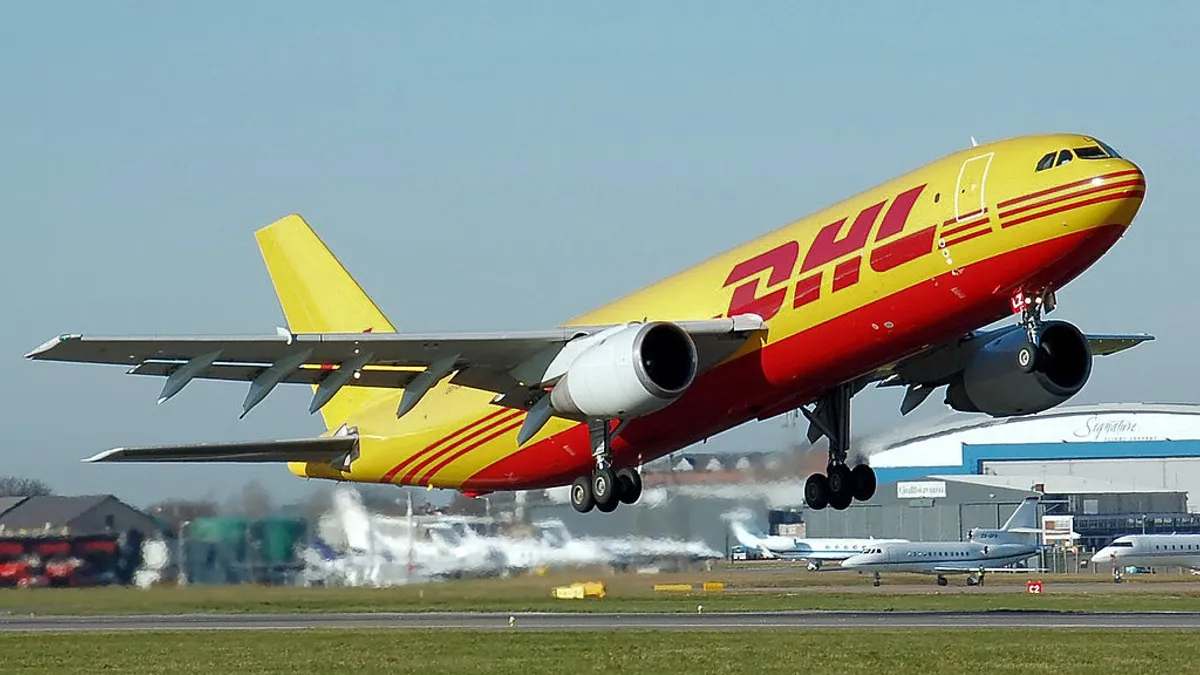Dive Brief:
- A recent DHL report found cross-border e-commerce will grow at a rate of 25% over the next three years, reaching $900 billion by 2020 from the $300 billion recorded in 2015, CSCMP's Supply Chain Quarterly reported Monday.
- The report also found e-tailers that sell to an international base may see sales increase by 10-15%, although online natives, brick-and-mortar sellers offering quality brand recognition, and manufacturers able to access consumers without an intermediary are the most successful at cross-border commerce.
- However, cross-border commerce comes with logistics challenges, such as international shipping, reserving inventory for international sales, choosing an appropriate online payment provider, and a myriad of rules governing local and international sales.
Dive Insight:
Market access has taken up a whole new meaning with the rise of e-commerce.
Just thirty years ago, international commerce was heavily regulated, and local coffee shops could only dream of sourcing from then-secluded countries like Myanmar, or even China. Much less could a company count on selling consumer products abroad unless it was an established brand like Coca Cola. Even then, market competition and tariffs often obstructed market entry, spurring the business world to push free trade agreements as a way of securing global access.
But the online marketplace empowered the small-to-medium business, and while at first limited to domestic sales, the international expansion of giants like Amazon and Alibaba allow mom-and-pop stores to sell directly to the consumer in China or India.
The increased audience has proved a boon for those that can get foreign sales right, and the growth trend does not seem to be slowing. In 2015, China spent more than 206.38 billion yuan ($31.96 billion) on overseas items, a 60% increase from 2014. India is also an avid consumer of cross-border goods, with a spending increase of 78% between 2015 and 2016. The United States and China are the world's largest vendors of goods sold across borders
The world is the vendor's oyster, now. That is, if the vendor can bypass the logistical challenges of cross-border commerce.
The option of buying from an overseas market is generally easier than the prospect of selling. Vendors must be prepared to meet with complex taxes, regulations, and payment processing. As a result, many sellers end up incorporating themselves in foreign markets to ease restrictions, but this process alone can be protracted and, at times, expensive. In addition, a degree of cultural sensitivity is required to sell abroad, as is clear from a recent fracas caused by Amazon's misstep in selling doormats resembling the Indian flag.....in India.
While the rise of e-commerce has empowered the small business domestically, then, the challenges of entering a foreign market are still discouraging many. (There's a reason the Trans-Pacific Partnership had an entire chapter dedicated to e-commerce). The DHL report's findings back this, as the logistics provider notes a large degree of financial resources to expand internationally will guarantee success. However, the report also finds that once the barriers to entry are surpassed, proper management and digital acuity could yield great results for an e-tailer expanding abroad.













